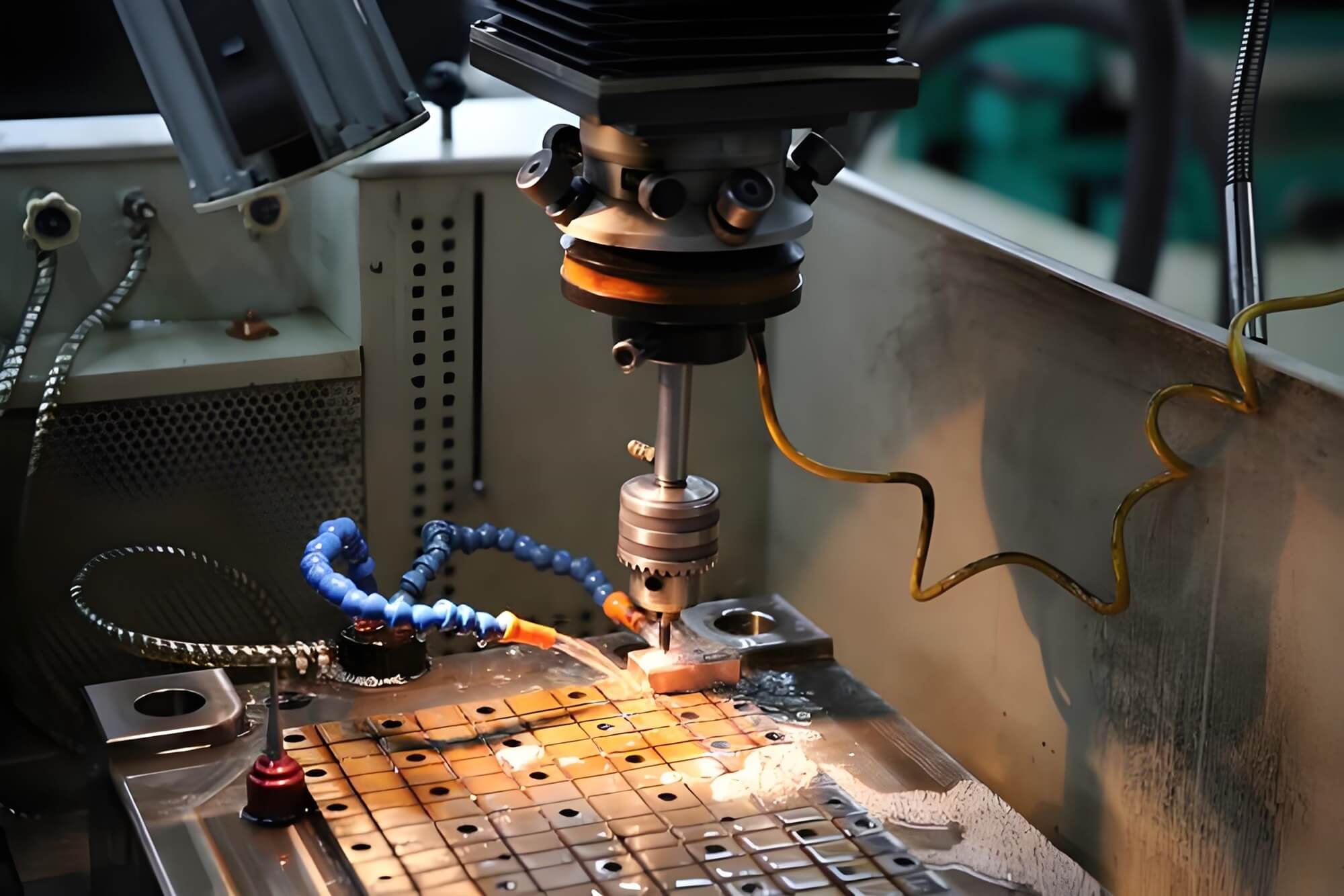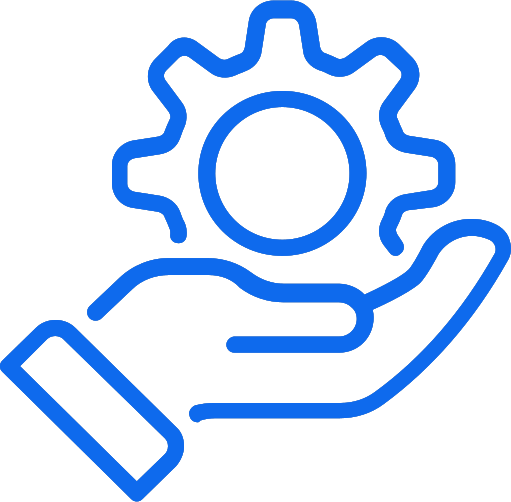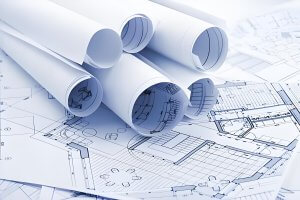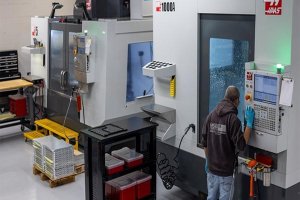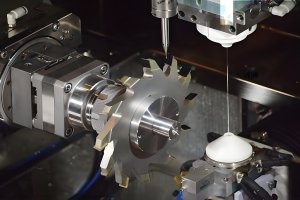Introduction to EDM Machining: Redefining Precision in Manufacturing
As a manufacturing enthusiast who’s spent years marveling at the precision of modern machining, I’ve seen firsthand how EDM machining transforms complex designs into reality when traditional methods like CNC machining hit their limits. Electrical Discharge Machining (EDM) is a game-changer for crafting intricate components, sharp internal corners, and parts from materials too tough or delicate for conventional tools. Its ability to deliver micron-level accuracy makes EDM machining a cornerstone in industries where failure isn’t an option.
What is EDM Machining? A Deep Dive into Spark-Driven Precision
EDM machining, or spark machining, is a non-contact process that uses electrical sparks to erode conductive materials with pinpoint accuracy. Unlike CNC machining, which relies on mechanical cutting tools, EDM machining employs thermal energy, making it ideal for hard metals like titanium or intricate geometries that defy traditional methods. I recall visiting a shop where EDM machining was used to craft a mold with details so fine that no other process could match its precision. This technology thrives in applications demanding extreme tolerances and complex shapes, offering a level of control that’s both fascinating and indispensable.
The Science Behind EDM Machining: How Sparks Shape the Toughest Materials
The magic of EDM machining lies in its use of controlled electrical discharges. An electrode and workpiece are submerged in dielectric fluid, which acts as an insulator. When a high voltage is applied across the spark gap, the fluid ionizes, forming a plasma channel that allows a spark to leap, generating temperatures of 8,000°C to 12,000°C. This heat melts tiny bits of material, which the dielectric fluid then flushes away. A CNC unit orchestrates this process with precision, ensuring repeatability. Unlike CNC machining, where tool wear can affect outcomes, EDM machining maintains consistency, even with superalloys. I’ve watched this process in action, marveling at how sparks create flawless features without physical contact, a stark contrast to the mechanical force of CNC machining.
A Historical Perspective: The Evolution of EDM Machining
The roots of EDM machining trace back to 1770, when Joseph Priestly observed the erosive power of electrical discharges. It wasn’t until 1943 that Soviet scientists B.R. and N.I. Lazarenko harnessed this phenomenon, developing the first EDM machining system by immersing electrodes in dielectric fluid. By the 1950s, the technology was commercialized, and the 1960s brought wire EDM, followed by CNC integration in the 1970s. Reflecting on my early days in manufacturing, I remember older machinists sharing stories of how EDM machining revolutionized mold-making, replacing labor-intensive handwork with automated precision. It’s humbling to see how far this technology has come, complementing CNC machining in modern shops.
The Core Processes of EDM Machining: A Trio of Precision Techniques
EDM machining encompasses three primary methods—Sinker EDM, Wire EDM, and Fast Hole Drilling—each tailored to specific challenges. I’ve worked with shops that combine these processes to tackle complex projects, often integrating CNC machining for roughing before finishing with EDM machining for unparalleled accuracy.
Sinker EDM (Ram EDM): Mastering Complex Cavities
Sinker EDM uses a custom-shaped electrode, typically graphite or copper, to carve cavities that mirror its form. This EDM machining process shines in creating 3D molds and blind cavities for injection molding. I once collaborated on a project where Sinker EDM crafted a mold with intricate ribs that CNC machining couldn’t achieve without multiple setups. The downside? Electrode wear requires multiple electrodes, driving up costs and time, a challenge I’ve seen shops mitigate by optimizing electrode materials.
Wire EDM (Wire-Cut EDM): Precision Profiles with Tight Tolerances
Wire EDM employs a continuously fed wire, usually brass, to slice precise 2D profiles in deionized water. Its accuracy (±0.0001 inches) and fine surface finish make it a favorite for aerospace and medical parts. I recall a project where Wire EDM cut a titanium aerospace component with tolerances so tight that CNC machining would have struggled to match. However, it’s limited to through-cuts, requiring starter holes for internal features, often drilled using Fast Hole EDM.
Fast Hole Drilling EDM: Micro-Holes with Speed and Precision
Fast Hole Drilling EDM uses a rotating, hollow electrode to bore small, deep holes, with high-pressure dielectric fluid flushing debris. This EDM machining process is critical for aerospace turbine blades and fuel injectors. I’ve seen it in action, drilling burr-free holes in curved surfaces where CNC machining drills would wander. Its limitation is its focus on round holes, but its speed and precision are unmatched for high-aspect-ratio features.
| Feature | Sinker EDM (Ram EDM) | Wire EDM (Wire-Cut EDM) | Fast Hole Drilling EDM |
| Primary Function | Creating complex 3D cavities and molds | Cutting intricate 2D profiles and contours | Rapidly drilling small, deep holes |
| Electrode Type | Custom-shaped Graphite or Copper | Thin, continuous Brass or Copper wire | Rotating, tubular Brass or Copper electrode |
| Achievable Geometry | Blind cavities, 3D shapes, deep ribs | Through-cuts, intricate profiles, tapers | High aspect-ratio holes (e.g., 100:1) |
| Typical Dielectric | Hydrocarbon Oil | Deionized Water | Hydrocarbon Oil |
| Key Advantage | Unmatched complex 3D shaping capability | Extreme precision and fine surface finish | Speed and ability to drill on hard/angled surfaces |
| Primary Limitation | Electrode wear adds cost and time | Cannot create blind (non-through) features | Specialized for drilling holes only |
Industrial Applications: Where EDM Machining Makes an Impact
EDM machining is a lifeline in industries where precision is non-negotiable. In aerospace, it shapes superalloys like Inconel for turbine blades with intricate cooling channels, a task I’ve seen CNC machining struggle with due to material hardness. In medical manufacturing, EDM machining produces stress-free titanium implants, ensuring patient safety. For tool and die making, Sinker and Wire EDM machining craft molds with details unattainable by CNC machining alone. In automotive, EDM machining creates durable gears and fuel injectors, blending precision with reliability. My experience touring a shop producing medical implants highlighted how EDM machining delivers flawless results where even advanced CNC machining falls short.
Material Considerations: Choosing the Right Fit for EDM Machining
EDM machining works only with conductive materials like tool steels, titanium, and superalloys, ruling out plastics or ceramics. Electrode selection is equally critical. Graphite is cost-effective for Sinker EDM, copper delivers fine finishes, brass is standard for Wire EDM, and copper-tungsten handles demanding jobs. I once advised a client to switch to copper-tungsten electrodes for machining tungsten carbide, significantly reducing wear and improving efficiency compared to their initial CNC machining attempts, which dulled tools rapidly.
EDM Machining in Context: Comparing with CNC Machining and Laser Cutting
EDM machining shines where CNC machining and laser cutting have limitations. CNC machining is faster for bulk material removal but can’t match EDM machining for sharp internal corners or hard materials. I’ve seen projects where CNC machining roughed out a part, and EDM machining finished it to exacting tolerances. Laser cutting excels for thin sheets but struggles with thick or reflective metals, where EDM machining delivers superior precision and burr-free edges. Combining these methods often yields the best results, a strategy I’ve seen optimize production in high-stakes projects.
| Machining Characteristic | Electrical Discharge Machining (EDM) | CNC Milling | Laser Cutting |
| Primary Mechanism | Thermal Erosion (Sparks) | Mechanical Shearing | Thermal Vaporization |
| Material Compatibility | Conductive materials only | Nearly all materials | Wide range; struggles with reflective/thick metals |
| Max Material Thickness | Excellent for thick materials | Good; limited by tool length | Best for thin to medium-thickness materials |
| Typical Precision | Extremely High (up, to ±0.0001″) | High (±0.001″) | High (±0.002″ – ±0.005″) |
| bricas Surface Finish | Uniform, non-directional; no burrs | Directional tool marks; potential for burrs | Clean edge; potential for burrs and HAZ |
| Sharp Internal Corners | Yes (Wire EDM near-zero radius) | No (limited by tool radius) | No (limited by beam kerf) |
| Relative Speed | Slow | Fast | Very Fast (on thin materials) |
| Ideal Use Case | Hard materials, complex geometry, extreme precision | General purpose machining, bulk removal | Fast, precise cutting of sheet materials |
The Future of EDM Machining: A Vision of Innovation
The future of EDM machining is bright, driven by cutting-edge advancements. Micro-EDM creates micron-scale features for MEMS with minimal heat impact, a process I’ve seen produce micro-gears with astonishing detail. Automation and AI enable 24/7 EDM machining, optimizing parameters in real-time, a trend I’ve observed boosting shop efficiency. Hybrid manufacturing, blending 3D printing with EDM machining, allows for near-net-shape parts finished to tight tolerances, a game-changer I believe will redefine production. Sustainable dielectric fluids are also emerging, reducing environmental impact—a priority I’ve seen gain traction in eco-conscious facilities.
Personal Insights: Why EDM Machining Inspires Me
Having worked closely with EDM machining and CNC machining teams, I’m continually impressed by EDM’s ability to tackle challenges that stump other methods. The precision of EDM machining feels almost surgical, especially when crafting intricate aerospace components or medical implants. However, it’s not without challenges—electrode wear and slower speeds require strategic planning. Pairing EDM machining with CNC machining for roughing has been a winning formula in my experience, balancing speed and precision. As EDM machining evolves with AI and sustainable practices, I’m excited to see it push the boundaries of what’s possible in manufacturing.
FAQ:
1. What is EDM machining, and how does it differ from CNC machining?
EDM machining, or Electrical Discharge Machining, is a non-contact process that uses electrical sparks to erode conductive materials, ideal for hard metals and intricate geometries. Unlike CNC machining, which relies on mechanical cutting tools, EDM machining uses thermal energy, allowing it to create sharp internal corners and machine superalloys like titanium without tool wear issues. In my experience, EDM machining is often used for finishing where CNC machining handles roughing.
2. What materials can be processed with EDM machining?
EDM machining requires electrically conductive materials, such as tool steels, titanium, Inconel, and tungsten carbide. It’s unsuitable for non-conductive materials like plastics or ceramics. I’ve seen EDM machining excel with hard materials that would quickly dull CNC machining tools, making it a go-to for aerospace and medical applications.
3. What are the main types of EDM machining processes?
The three primary EDM machining processes are Sinker EDM (for 3D cavities and molds), Wire EDM (for precise 2D profiles), and Fast Hole Drilling EDM (for small, deep holes). Each serves unique purposes, and I’ve observed shops combining them with CNC machining to tackle complex projects efficiently.
4. What industries benefit most from EDM machining?
EDM machining is critical in aerospace (e.g., turbine blades), medical device manufacturing (e.g., titanium implants), tool and die making (e.g., molds), and automotive (e.g., fuel injectors). Its precision and ability to handle hard materials make it indispensable where CNC machining alone isn’t enough, based on my visits to manufacturing facilities.
5. How does EDM machining compare to laser cutting?
EDM machining offers tighter tolerances (±0.0001 inches) and burr-free edges, especially for thick metals, while laser cutting is faster for thin sheets but struggles with reflective or thick materials. I’ve seen EDM machining outperform laser cutting for high-precision aerospace parts, though laser cutting is often preferred for speed in less demanding applications.
6. What are the limitations of EDM machining?
EDM machining is slower than CNC machining and limited to conductive materials. Sinker EDM faces electrode wear, increasing costs, while Wire EDM requires through-cuts, and Fast Hole Drilling is restricted to round holes. In my experience, strategic planning, like using CNC machining for bulk removal, can mitigate these drawbacks.
7. Can EDM machining be combined with other processes?
Yes, EDM machining is often paired with CNC machining for optimal results. For example, CNC machining can rough out a part, while EDM machining finishes intricate details or sharp corners. I’ve seen hybrid approaches, like combining 3D printing with EDM machining, create complex parts that were previously impossible.
8. What are the latest innovations in EDM machining?
Innovations include Micro-EDM for micron-scale features, AI-driven automation for 24/7 operation, hybrid manufacturing with 3D printing, and eco-friendly dielectric fluids. I’m particularly excited about AI optimizing EDM machining parameters in real-time, a trend I’ve seen boost efficiency in modern shops.
Reference:
https://testbook.com/mechanical-engineering/electrical-discharge-machining;
https://www.theengineerspost.com/electric-discharge-machining/;
https://en.wikipedia.org/wiki/Electrical_discharge_machining;
https://en.wikipedia.org/wiki/Talk:Electrical_discharge_machining;
Other Articles You Might Enjoy
- Electrical Discharge Machining (EDM) Basics: Process, Benefits, and Multidisciplinary Applications
Introduction to Electrical Discharge Machining (EDM) Electrical Discharge Machining, commonly referred to as EDM, is a non-traditional machining method that employs electrical discharges or sparks to remove material from a…
- How to Choose the Best EDM Machine for Your Manufacturing Needs
Why Choosing the Right EDM Machine Matters When I first explored the world of EDM machines, I quickly realized their transformative potential in modern manufacturing. These machines go beyond the…
- Electrical Discharge Machining: Exploring Construction, Applications, Pros, and Cons
Electrical discharge machining (EDM), also known as spark machining, is a unique process that sets it apart from conventional machining methods like CNC turning and milling. Unlike those processes that…
- Machining the Impossible: An In-Depth Look at Wire EDM Technology
Introduction to Wire EDM: In my years working with advanced manufacturing, I’ve seen countless machining challenges—parts too intricate, materials too hard, or tolerances too tight for traditional methods. That’s where…
- Sinker EDM vs Wire EDM: Key Differences and Applications
Introduction to Electrical Discharge Machining (EDM) Electrical Discharge Machining, commonly known as EDM, is an advanced machining technique used to shape hard metals and other conductive materials through the use…


